Waterford,Munster,Ireland 作者: 来源: 发布时间:2021-06-16
I.Population and Area
Location of Waterford in Ireland
Coordinates: 52°15′24″N 7°7′45″W
Country Ireland
Province Munster
County Waterford
Founded 914
Government
• Type City and County Council
• Mayor of Waterford Damien Geoghegan
• Dáil Éireann Waterford
Area
• City 48.30 km2 (18.65 sq mi)
Population (2016)
• City 53,504
• Rank 5th
• Density 1,107.5/km2 (2,868/sq mi)
• Metro 82,963
Demonym(s) Waterfordian, Déisean
Time zone UTC±0 (WET)
• Summer (DST) UTC+1 (IST)
Eircode routing key X91
Telephone area code +353(0)51
Vehicle index
mark code W
Waterford from Old Norse Veðrafjǫrðr meaning "ram (wether) fjord") is a city in Ireland. It is in County Waterford in the south-east of Ireland and is located in the province of Munster. The city is situated at the head of Waterford Harbour. It is the oldest and the fifth most populous city in the Republic of Ireland. It is the tenth most populous settlement on the island of Ireland. Waterford City and County Council is the local government authority for the city. According to the 2016 Census, 53,504 people live in the city, with a wider metropolitan population of 82,963.
Today, Waterford is known for Waterford Crystal, a legacy of the city's former glassmaking industry. Glass, or crystal, was manufactured in the city from 1783 until early 2009, when the factory there was shut down after the receivership of Waterford Wedgwood plc. The Waterford Crystal visitor centre in the Viking Quarter, under new owners, opened in June 2010, after the intervention of Waterford City Council and Waterford Chamber of Commerce, and resumed production. Waterford is also known for being the starting point of Ryanair's first flight, a 14-seat Embraer Bandeirante turboprop aircraft flying between Waterford and Gatwick Airport.
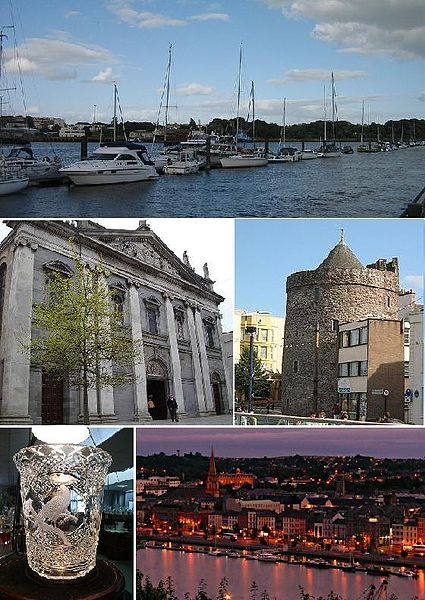
II.Natural Geography (environment and resources)
Geography
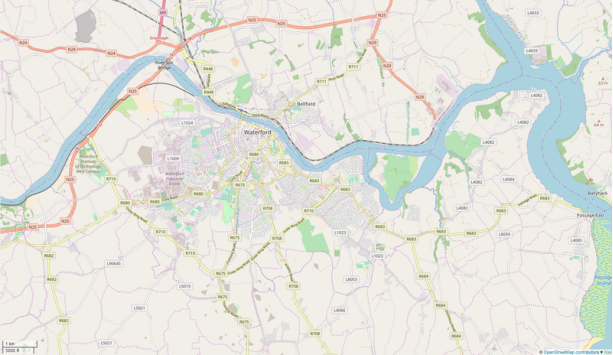
Map of Waterford
-- Climate
The climate of Waterford is, like the rest of Ireland, classified as a maritime temperate climate (Cfb) according to the Köppen climate classification system. It is mild and changeable with abundant rainfall and a lack of temperature extremes. The counties in the Waterford area are often referred to as the 'Sunny Southeast'. The hottest months of the year are June, July and August with temperatures of around 17 – 22 degrees. Waterford gets rainfall all year round and the wettest months are October, November, December and January.
-- Demographics
With a population of 53,504 and a metropolitan area population of 82,963, Waterford is the fifth most populous city in the State and the 32nd most populous area of local government.
The population of Waterford grew from 1,555 in 1653 to around 28,000 in the early 19th century, declining to just over 20,000 at the end of the 19th, then rising steadily to over 40,000 during the 20th century. According to the 2016 Census, 53,504 people live in the city of Waterford, with a wider metropolitan population of 82,963.
Transport
The M9 motorway, which was completed on 9 September 2010, connects the city to Dublin. The N24 road connects the city to Limerick city. The N25 road connects the city to Cork city. The route traverses the River Suir via the River Suir Bridge. This cable-stayed bridge is the longest single bridge span in Ireland at 230m. The route continues eastwards to Rosslare Harbour.
Waterford railway station is the only railway station in the county of Waterford. It is operated by Iarnród Éireann and provides 8 daily return services to Dublin and a Monday–Saturday Intercity service to Limerick Junction via Clonmel with onward connections to Limerick, Ennis, Athenry, Galway, Cork, Killarney, and Tralee. The line between Waterford and Rosslare Harbour ceased passenger services in 2010 and was replaced by Bus Éireann route 370. The station is directly connected to Waterford Port (Belview). A freight yard is located at the Dublin/Limerick end of the station, served by freight traffic such as cargo freight and timber which travel to and from Dublin Port and Ballina. In November 2016 it was revealed the Waterford could lose its connection to Limerick Junction by 2018 with the closure of the Limerick Junction Waterford line by CIE/IE to save money as the line is low demand. On 29 May 2018 the contract held by DFDS for a freight service from Ballina to Belview Port expired and was not renewed.
Bus Éireann, JJ Kavanagh and Sons, Dublin Coach, and Wexford Bus provide bus services around the city centre and to other towns and cities in Ireland. A daily coach service to England via South Wales and terminating at Victoria Coach Station, London is operated by Eurolines. All regional bus services depart from Waterford Bus Station on the quay, and city centre services run throughout the city. Planning for bus lanes in the city centre are at an early stage and bus lanes will be on Parnell Street, Manor Street, The Mall, and the South Quays. A bus lane will be in each direction. On street parking will be removed from Parnell Street to facilitate the lanes. This is part of the city centre green plan.
The Waterford Greenway is Ireland's longest greenway, and connects the city with Mount Congreve, Kilmeaden, Kilmacthomas, and Dungarvan.
Waterford Airport is located 9 km outside the city centre.
III.Economy
Waterford, Ireland - Affordability Index
2.21
Index, the higher the better in 2012
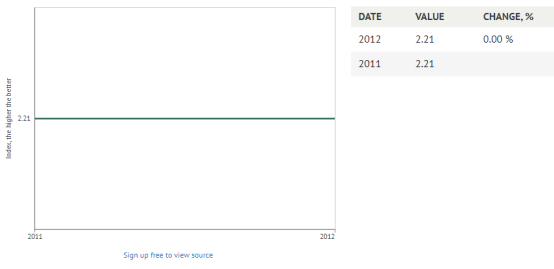
Waterford, Ireland - Price to Income Ratio
4.86
Ratio, the lower the better in 2012
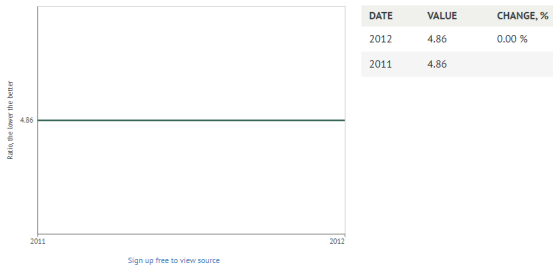
Waterford, Ireland - Mortgage as a Percentage of Income
45.23
Percentage, the lower the better in 2012
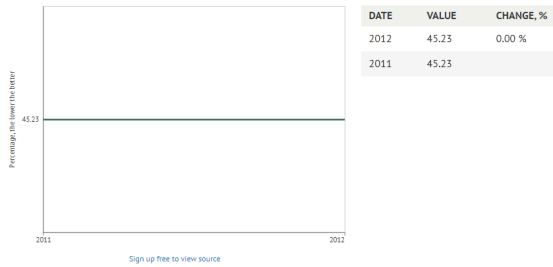
Reference: https://knoema.com/search?query=Waterford%2C%20gdp
IV.Industrial Characterisitics
Waterford is the main city of Ireland's South-East Region. Historically Waterford was an important trading port which brought much prosperity to the city throughout the city's eventful history. Throughout its history Waterford Crystal provided employment to thousands in the city and surrounding areas.
Waterford Port is Ireland's closest deep-water port to mainland Europe, handling approximately 12% of Ireland's external trade by value.[42] Waterford's most famous export, Waterford Crystal, is an internationally known and highly sought after product that was manufactured in the city from 1783 to 2009 and again from 2010 to the present day. Places where Waterford Crystal can be seen include New York City, where Waterford Crystal made the 2,668 crystals for the famous New Year's Eve Ball that is dropped each year in Times Square; Westminster Abbey; Windsor Castle; and the Kennedy Center, Washington
Agriculture also played an important part in Waterford's economic history. Kilmeadan, about 5 km from the city, was home to a very successful co-operative. The farmers of the area benefited from the sale of their produce (mostly butter and milk) to the co-op. In 1964, all of the co-ops in Waterford amalgamated to become Waterford Co-op. This led to the construction of a cheese factory on a greenfield site opposite the general store, and Kilmeadan cheese was to become one of the most recognised and successful Cheddar brands in the world, winning gold and bronze medals in the World Cheese Awards in London in 2005.
Waterford is the site of a number of multinational companies including GlaxoSmithKline, Bausch & Lomb, Nypro Healthcare, Sanofi, West Pharmaceuticals, Hasbro, Teva Pharmaceuticals and Honeywell International.
The Irish economic recession from 2008 onwards has had a major negative impact on Waterford's economy. A number of multinational companies have closed, including Waterford Crystal (which subsequently reopened) and Talk Talk, which has led to a high level of unemployment. Until 2013 the hedge fund office of the Citibank resided here.
Waterford Co-op and Avonmore Co-op have merged to form Glanbia plc.
V.Attractions
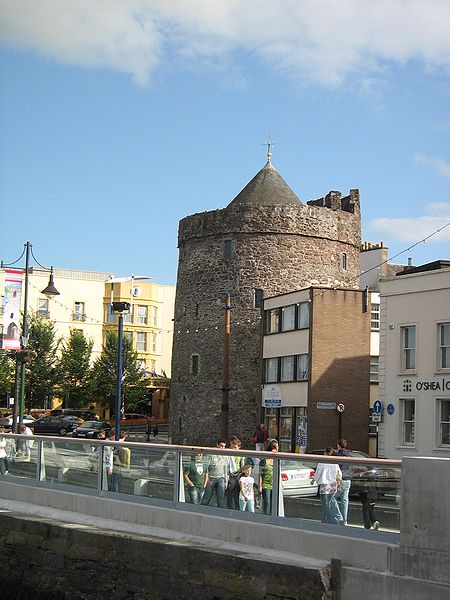
Reginald's Tower
The city of Waterford consists of various cultural quarters, the oldest of which is known as Viking Triangle. This is the part of the city surrounded by the original 10th century fortifications, which is triangular in shape with its apex at Reginald's Tower. Though this was once the site of a thriving Viking city, the city centre has shifted to the west over the years, and it is now a quiet and tranquil area, dominated by narrow streets, medieval architecture, and civic spaces. Over the past decade, a number of restaurants have opened in High Street and Henrietta Street, taking advantage of the charming character of the area. Much of Waterford's impressive architecture is to be found in the 'Viking Triangle'.
In the 15th century, the city was enlarged with the building of an outer wall on the west side. Today Waterford retains more of its city walls than any other city in Ireland with the exception of Derry, whose walls were built much later. Tours of Waterford's city walls are conducted daily.
The Quay, once termed by historian Mark Girouard 'the noblest quay in Europe', is a mile long from Grattan Quay to Adelphi Quay, though Adelphi Quay is now a residential area. It is still a major focal point for Waterford, commercially and socially, and the face that Waterford presents to those travelling into the city from the north. Near Reginald's Tower is the William Vincent Wallace Plaza, a monument and amenity built around the time of the millennium that commemorates the Waterford born composer.
John Roberts Square is a pedestrianised area that is one of the main focal points of Waterford's modern day commercial centre. It was named after the city's most celebrated architect, John Roberts, and was formed from the junction of Barronstrand Street, Broad Street and George's Street. It is often referred to locally as Red Square, due to the red paving that was used when the area was first pedestrianised. A short distance to the east of John Roberts Square is Arundel Square, another square with a fine commercial tradition, which the City Square shopping centre opens onto.
Ballybricken, in the west, just outside the city walls, is thought to have been Waterford's Irishtown, a type of settlement that often formed outside Irish cities to house the Vikings and Irish that had been expelled during the Norman invasion of Ireland. Ballybricken is an inner city neighbourhood with a long tradition, centred around Ballybricken hill, which was a large, open market-square. Today it has been converted into a green, civic space, but the Bull Post, where livestock was once bought and sold, still stands as a remnant of the hill's past.
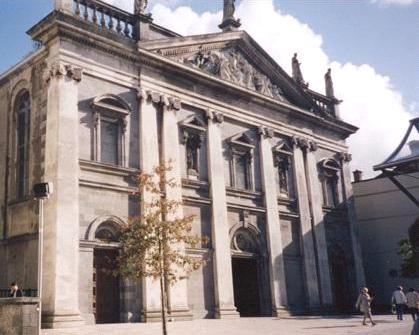
Cathedral of the Most Holy Trinity on Barronstrand Street
The Mall is a fine Georgian thoroughfare, built by the Wide Streets Commission to extend the city southwards. It contains some of the city's finest Georgian architecture. The People's Park, Waterford's largest and finest park, is located nearby.
Ferrybank, in County Waterford, is Waterford's only suburb north of the river. It contains a village centre of its own.
In April 2003 an important site combining a 5th-century Iron Age and 9th century Viking settlement was discovered at Woodstown near the city, which appears to have been a Viking town that predates all such settlements in Ireland.
Waterford Crystal is manufactured in Waterford but in early 2009 the company moved it operations to continental Europe. A new Waterford Crystal visitor centre opened on 22 June 2010.
Waterford's oldest public house (pub) can be found just outside the old 'Viking Triangle'. T & H Doolan's, of 31/32 George's Street, has been officially active and open to the public for over three hundred years. The official record of licences dates back to the 18th century but the premises is believed to be closer to five hundred years in age. A main element of the structure includes one of the original city walls, almost 1,000 years old, which can be viewed in the lounge area of the building.
The cites streets are called Barronstand Street, Great Georges Street, Michael Street, Broad Street, Parnell Street, Peter Street, O'Connell Street too name but a few.
VI.History
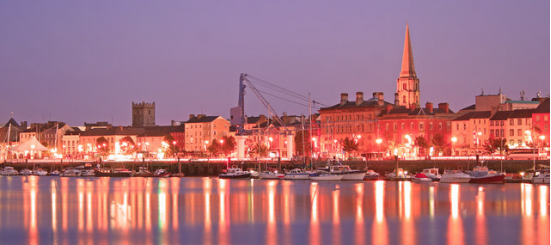
Waterford Quay at night
The name 'Waterford' comes from Old Norse Veðrafjǫrðr, meaning 'ram (wether) fjord'. The Irish name is Port Láirge, meaning "Lárag's port".
Viking raiders first established a settlement near Waterford in 853. It and all the other longphorts were vacated in 902, the Vikings having been driven out by the native Irish. The Vikings re-established themselves in Ireland at Waterford in 914, led at first by Ottir Iarla (Jarl Ottar) until 917, and after that by Ragnall ua Ímair and the Uí Ímair dynasty, and built what would be Ireland's first city. Among the most prominent rulers of Waterford was Ivar of Waterford.
In 1167, Diarmait Mac Murchada, the deposed King of Leinster, failed in an attempt to take Waterford. He returned in 1170 with Cambro-Norman mercenaries under Richard de Clare, 2nd Earl of Pembroke (known as Strongbow); together they besieged and took the city after a desperate defence. In furtherance of the Norman invasion of Ireland, King Henry II of England landed at Waterford in 1171. Waterford and then Dublin were declared royal cities, with Dublin also declared capital of Ireland.
Throughout the medieval period, Waterford was Ireland's second city after Dublin. In the 15th century Waterford repelled two pretenders to the English throne: Lambert Simnel and Perkin Warbeck. As a result, King Henry VII gave the city its motto: Urbs Intacta Manet Waterfordia (Waterford remains the untaken city).
After the Protestant Reformation, Waterford remained a Catholic city and participated in the confederation of Kilkenny – an independent Catholic government from 1642 to 1649. This was ended abruptly by Oliver Cromwell, who brought the country back under English rule; his son-in-law Henry Ireton finally took Waterford in 1650 after a major siege.[6] In 1690, during the Williamite War, the Jacobite Irish Army was forced to surrender Waterford in the wake of the Battle of the Boyne.
The 18th century was a period of huge prosperity for Waterford. Most of the city's best architecture appeared during this time. A permanent military presence was established in the city with the completion of the Cavalry Barracks at the end of the 18th century.
In the early 19th century, Waterford City was deemed vulnerable and the British government erected three Martello towers on the Hook Peninsula to reinforce the existing Fort at Duncannon. During the 19th century, great industries such as glass making and ship building thrived in the city.
The city was represented in the Parliament of the United Kingdom from 1891 to 1918 by John Redmond MP, leader (from January 1900) of the Irish Parliamentary Party. Redmond, then leader of the pro-Parnell faction of the party, defeated David Sheehy in 1891. In 1911, Br. Jerome Foley, Br. Dunstan Drumm and Br. Leopold Loughran left Waterford for Malvern, Australia. Here, they founded a Catholic college which is still in existence today. In July 1922, Waterford was the scene of fighting between Irish Free State and Irish Republican troops during the Irish Civil War.
VII.Other information
Culture
-- Public buildings
A Large Church spire can be seen above and behind a theatre and a deciduous tree with leaves shed.
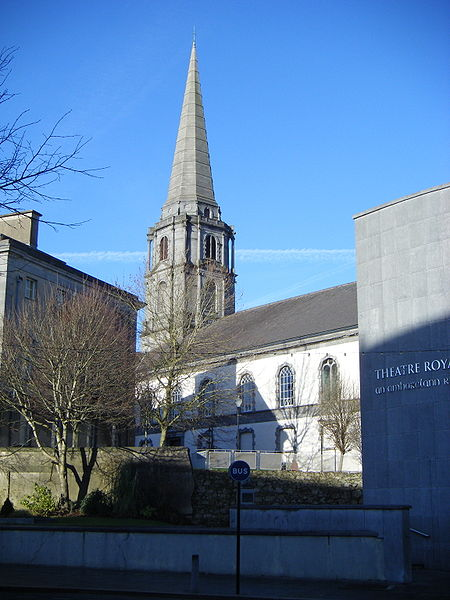
Christ Church Cathedral
Waterford Museum of Treasures, forming the hub of the Viking Triangle, previously housed in the Granary on Merchant's Quay, is now accommodated in two museums on the Mall. The first is housed in the 19th-century Bishop's Palace, on the Mall, which holds items from 1700–1970. This was opened in June 2011. The second museum is located next to Bishop's Palace displaying the Medieval history of the city as well as the Chorister's Hall.
As well as the above, The Mall now contains Reginald's Tower, The House of Waterford Crystal, Christchurch Cathedral, and the Theatre Royal among various other historical landmarks.
Reginald's Tower, the oldest urban civic building in the country, is situated on the Quays/The Mall, in Waterford. It has performed numerous functions over the years and today is a civic museum.
A museum at Mount Sion (Barrack Street) is dedicated to the story of Brother Edmund Ignatius Rice and the history of the Christian Brothers and Presentation Brothers. Along with the museum there is a café and a new chapel. The new museum was designed by Janvs Design
Waterford Municipal Art Gallery has been housed in Greyfriars since 2001. It is the permanent home for the Municipal Art Collection, "A Gem Among Municipal Collections", over 200 paintings by Irish and International artists, including pieces from renowned artists such as Jack B Yeats, Paul Henry, Charles Lamb and Louis Le Brocquy. Garter Lane Arts Centre is located in two separate restored buildings on O'Connell Street. A new contemporary gallery called Soma opened in 2009 on the Mall.
The Theatre Royal on The Mall, was built in 1876, as part of a remodelled section of City Hall. It is a U-shaped, Victorian theatre, seating about 600 people.
Garter Lane Arts Centre is housed in two conserved 18th-century buildings on O'Connell Street. Garter Lane Gallery, the 18th-century townhouse of Samuel Barker contains the gallery and the Bausch & Lomb Dance Studio, and Garter Lane Theatre is based in the Quaker Meeting House, built in 1792. The theatre was renovated and restored in 2006 and now contains a 164-seat auditorium.
St. John's College, Waterford was a Catholic seminary founded in 1807 for the diocese, in the 1830s the college established a mission to Newfoundland in Canada. It closed as a seminary in 1999 and in 2007 much of its building and lands were sold to the Respond Housing association.
-- Arts
Theatre companies. There are three theatre companies, Red Kettle, Spraoi and Waterford Youth Arts. Red Kettle is a professional theatre company based in Waterford that regularly performs in Garter Lane Theatre. Spraoi is a street theatre company based in Waterford. It produces the Spraoi festival, and has participated regularly in the Waterford and Dublin St. Patrick's day parades, often winning best float. In January 2005 the company staged its biggest and most prestigious production to date, "Awakening", the Opening Show for Cork 2005 European Capital of Culture. Waterford Youth Arts (WYA), formerly known as Waterford Youth Drama, was established in August 1985. WYA has grown from the voluntary efforts of two individuals and 25 young people, to a fully structured youth arts organisation with a paid staff and 400 young people taking part each week. Notable playwrights include Jim Nolan, who co-founded Red Kettle Theatre Company.
Libraries There are three public libraries in the city, all operated by Waterford City Council: Central Library, in Lady Lane; Ardkeen Library, in the Ardkeen shopping centre on the Dunmore Road; and Brown's Road Library, on Paddy Brown's Road. Central Library, or Waterford City Library, opened in 1905. It was the first of many Irish libraries funded by businessman Andrew Carnegie (Carnegie funded 2,509 libraries across the world). It was renovated in 2004 for its centenary.
The Barrack Street Concert Band A band established in 1870 and is one of the only bands in Ireland to have unbroken service through a civil war and two World Wars. They have a long and rich history. In 1982 they changed their name to The Barrack Street Concert Band. The new name reflected a change in instrumentation including flutes, saxophones, oboes and a full percussion section which led to more members joining and a wider variety of music being played. In 1994 the band won the All Ireland Senior Military Band Championships in Wesley college, Dublin under the Baton of Mr Niall O'Connor and 10 years later, in 2004, the band won the South of Ireland Senior Military band Championships in Clonakilty Co Cork under the Baton of the band's current musical director Mr Mark Fitzgerald.
Waterford Film For All (WFFA) is a non-profit film society whose aim is to offer an alternative to the cineplex experience in Waterford. WFFA conducts much of its activities on the Waterford Institute of Technology (WIT) campus.
Cinema – Odeon Cinema in the Railway Square complex. Omniplex Cinema-Patrick Street
Events
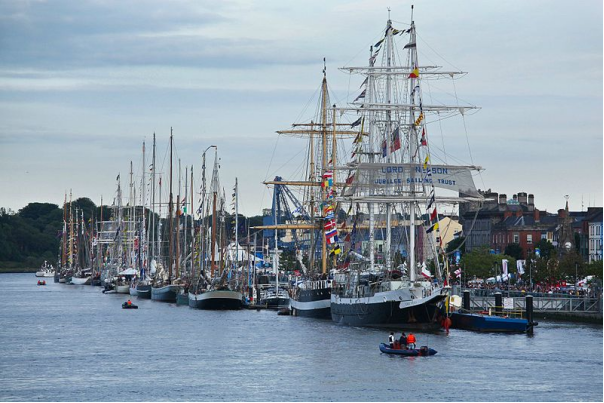
Tall Ships lined up on the quays in Waterford for the festival
The Waterford Film Festival was established in 2007 by local filmmaker Stephen Byrne. His objective was to bring something new to Waterford's arts and cultural scene, promoting local and national filmmakers and writers, but in particular independent film.
Waterford Music Fest, launched in 2011, is an outdoor, one day music event which takes place in the heart of Waterford City during the summer. In 2011 Waterford Music Fest, organised by Music Events Ireland, was headlined by 50 Cent, Flo Rida and G-Unit. Over 10,000 people attended the 2011 event.
Spraoi festival, organised by the Spraoi Theatre Company, is a professional festival and street arts organisation which takes over the city centre of Waterford on the August Bank Holiday Weekend. It attracts audiences in excess of 80,000 people to the city.
Waterford International Festival of Light Opera is an annual event that has been held in the Theatre Royal since 1959. It has recently been rebranded as the Waterford International Festival of Music and now takes place in November.
Tall Ships Festival, held in Waterford in 2005, marked the start of the Tall Ships race of that year. The Suir river provided the berthing location for the tall ships (up to 90) that lined the north and south quays for almost a week. The festival attracted in the region of 450,000 people to the city. Waterford hosted the start of the Tall Ships race again in 2011.
Waterford Harvest Food Festival takes place annually in September along the Quays. The festival offers visitors demonstrations, workshops and tours of local producers, numerous markets, tastings and dinners.
St. Patrick's Day parade takes place annually on 17 March.
There are two Arts Festivals of note in the city: The Imagine Arts Festival in October and The Fringe Arts Festival in September.
Waterford Winterval an annual Christmas festival held in the city centre.
Sport
Waterford Boat Club is the oldest active sports club in Waterford, established in 1878. Located on Scotch Quay, the club competes in the Irish Rowing Championships. In 2009, several Waterford rowers were selected to row for Ireland.
There are three athletics clubs: West Waterford AC, Waterford Athletic Club and Ferrybank Athletic Club. The Waterford Viking Marathon is held in June. St. Anne's Waterford Lawn Tennis Club, established in 1954, is the result of the amalgamation of Waterford Lawn Tennis Club and St. Anne's Lawn Tennis Club. It has nine courts to cater for social and competitive players in all age groups.
Waterford is home to several association football clubs, including Waterford FC, Benfica W.S.C. and Johnville F.C.. Waterford F.C. is a member of the League of Ireland, Benfica is one of the oldest women's football clubs in the Republic of Ireland, while Johnville F.C. is a notable academy club. Notable Waterford footballers include Davy Walsh, Paddy Coad, Jim Beglin, Alfie Hale, Eddie Nolan, John O'Shea James Coade and Daryl Murphy. John Delaney, chief executive of the Football Association of Ireland, is originally from Waterford.
There are two rugby union clubs in Waterford City: Waterford City R.F.C. and Waterpark R.F.C.
Other team sports include Gaelic Athletic Association with clubs such as Mount Sion GAA, Erin's Own GAA, De La Salle GAA, Roanmore GAA, Ferrybank GAA and Ballygunner GAA; cricket is represented by Waterford District Cricket Club who are based in Carraiganore and competes in the Munster Cricket Union; there are two inline hockey clubs, Waterford Shadows HC and Waterford Vikings, both of which compete in the Irish Inline Hockey League; and American football is played by Waterford Wolves, based at the Waterford Regional Sports Centre, and is the only American football club in Waterford.
VIII.Contact information
Mayor: Damien Geoghegan
Contact Customer Care
TEL: 0761 10 20 20
contact@waterfordcouncil.ie
Make a Freedom of Information request
Tel: 0761 10 27 36
Contact Person: Melanie Cunningham
foi@waterfordcouncil.ie
Website: https://www.waterfordcouncil.ie/
Social media:
Facebook: Waterford Council @Waterfordcouncil
Twitter: Waterford Council @WaterfordCounci
Youtube: https://www.youtube.com/user/VisitWaterford Waterford Council
Reference: www.waterfordcouncil.ie
